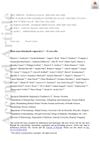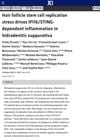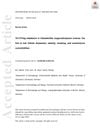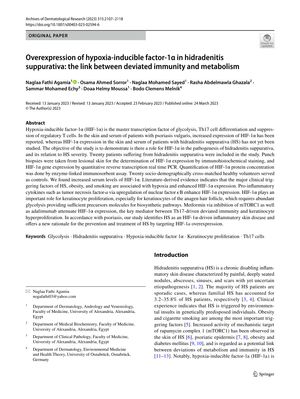TLDR Increased HIF-1α is linked to the inflammation and severity of hidradenitis suppurativa, suggesting treatments that lower HIF-1α could help.
The study investigated the role of hypoxia-inducible factor-1α (HIF-1α) in the pathogenesis of hidradenitis suppurativa (HS) and its relation to disease severity. It included 20 patients with HS and 20 healthy volunteers as controls. The researchers measured HIF-1α expression in skin biopsies and serum levels using immunohistochemical staining, quantitative reverse transcription real-time PCR, and enzyme-linked immunosorbent assay. The results showed increased serum levels of HIF-1α in HS patients. The study suggests that HIF-1α is involved in the inflammatory process of HS, similar to its role in psoriasis, and is influenced by factors like obesity and smoking. It also indicates that HIF-1α is crucial for keratinocyte proliferation in the anagen hair follicle. Treatments that reduce HIF-1α expression, such as metformin and adalimumab, could be effective for HS by targeting the link between Th17-driven immunity and keratinocyte hyperproliferation. This study positions HS as an HIF-1α-driven inflammatory skin disease and proposes new prevention and treatment strategies by focusing on HIF-1α overexpression.
30 citations
,
October 2021 in “Scientific Reports” 22 citations
,
August 2021 in “Frontiers in medicine” Immune cells in Hidradenitis suppurativa become more inflammatory and may be important for treatment targets.
9 citations
,
August 2021 in “Experimental dermatology” Hidradenitis suppurativa is a skin disease caused by the breakdown of the skin's natural immune barriers, especially around hair follicles.
4 citations
,
March 2021 in “Journal of Histotechnology” Hidradenitis suppurativa lesions have less collagen and elastin but more new blood vessels.
 78 citations
,
October 2020 in “Experimental Dermatology”
78 citations
,
October 2020 in “Experimental Dermatology” Hidradenitis suppurativa is caused by genetic factors, inflammation, bacteria, hormones, and lifestyle factors like obesity and smoking.
 33 citations
,
April 2020 in “Journal of Clinical Investigation”
33 citations
,
April 2020 in “Journal of Clinical Investigation” Stress in hair follicle stem cells causes inflammation in a chronic skin condition through a specific immune response pathway.
 66 citations
,
March 2018 in “British journal of dermatology/British journal of dermatology, Supplement”
66 citations
,
March 2018 in “British journal of dermatology/British journal of dermatology, Supplement” An imbalance between certain immune cells is linked to a chronic skin condition and may be influenced by obesity, smoking, and autoimmune issues.
71 citations
,
June 1993 in “Journal of Investigative Dermatology”
1 citations
,
January 2025 in “Genes & Diseases” Understanding T cells and signaling pathways can lead to better treatments for hair loss.
December 2023 in “Acta dermato-venereologica” Metformin might help treat certain skin conditions, but more research is needed.
9 citations
,
June 2023 in “Cells” Certain natural and synthetic compounds may help treat inflammatory skin diseases by targeting a specific signaling pathway.
56 citations
,
November 2022 in “Biomolecules” Targeting macrophages may improve wound healing.
April 2024 in “International journal of molecular sciences” Combination pharmacotherapy is generally more effective for treating keloids and hypertrophic scars.



